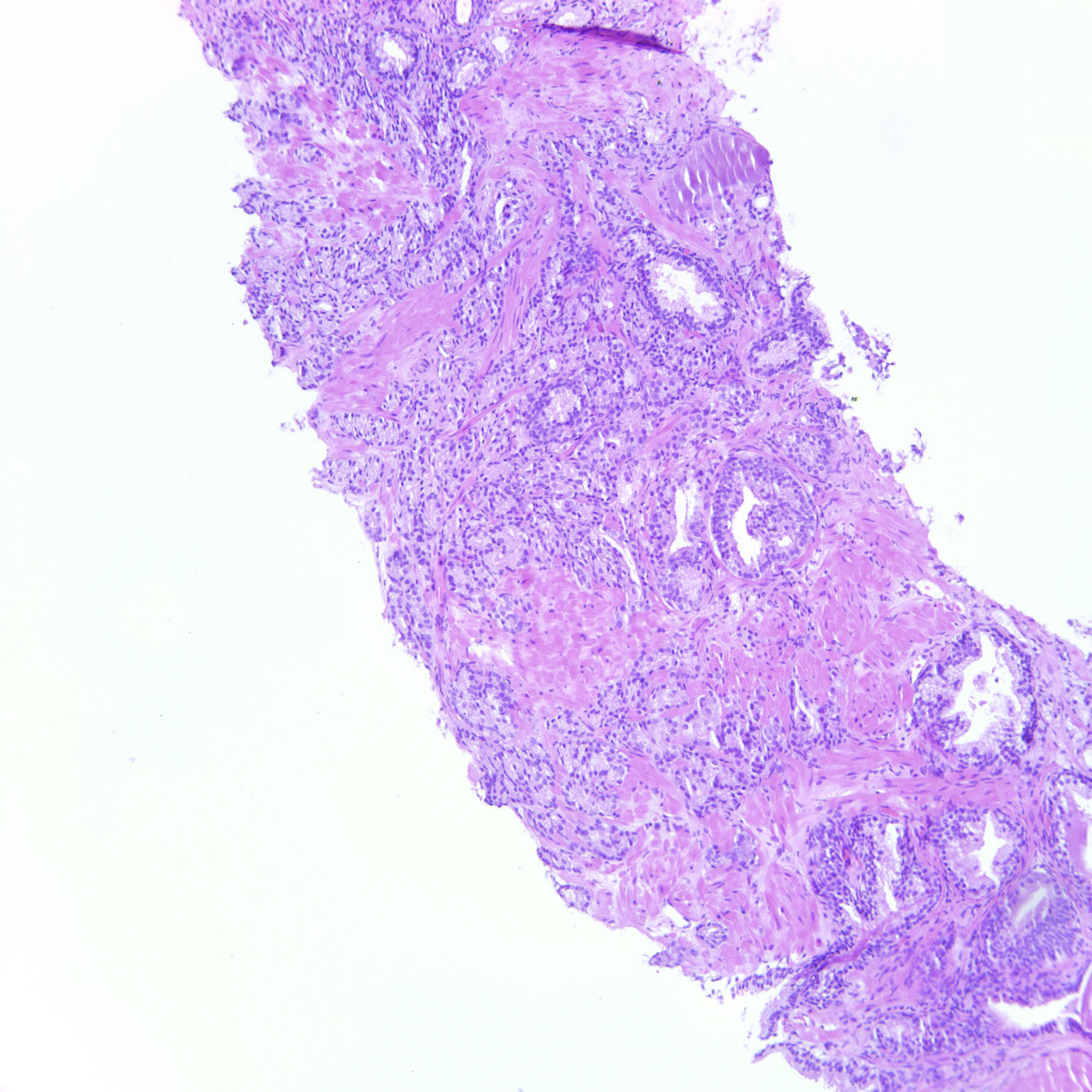Case ID: 122
Publication date: 22 Dec, 2024
Consensus grade: GS 4+3=7 (ISUP 3)
Show diagnosis by expert panel members| User | Diagnosis | Difficulty | Comment |
|---|---|---|---|
| Pathologist 1 | GS 4+3=7 (ISUP 3) | Typical | |
| Pathologist 2 | GS 4+3=7 (ISUP 3) | Typical | |
| Pathologist 3 | GS 4+3=7 (ISUP 3) | Typical | |
| Pathologist 4 | GS 4+3=7 (ISUP 3) | Typical |
not easy to know which G is more represented, 3 or 4? |
| Pathologist 5 | GS 4+3=7 (ISUP 3) | Borderline lower | |
| Pathologist 6 | GS 4+3=7 (ISUP 3) | Typical | |
| Pathologist 7 | GS 4+3=7 (ISUP 3) | Typical | |
| Pathologist 8 | GS 4+3=7 (ISUP 3) | Typical | |
| Pathologist 9 | GS 4+3=7 (ISUP 3) | Typical |
Better if high-power of each pic is immediately after low-power pic |
| Pathologist 10 | GS 4+3=7 (ISUP 3) | Typical |
Appears to be 5-10% pattern 3 |
| Pathologist 11 | GS 4+3=7 (ISUP 3) | Typical | |
| Pathologist 12 | GS 4+3=7 (ISUP 3) | Typical | |
| Pathologist 13 | GS 4+3=7 (ISUP 3) | Typical | |
| Pathologist 14 | GS 4+3=7 (ISUP 3) | Typical | |
| Pathologist 15 | GS 4+3=7 (ISUP 3) | Typical | |
| Pathologist 16 | GS 4+3=7 (ISUP 3) | Borderline lower |
Mainly fused and cribriform glands with a second component of well-formed separate glands |
| Pathologist 17 | GS 4+3=7 (ISUP 3) | Borderline lower |
some images are pure 4 and some pure 3 - so tricky to put it in 4+3 vs 3+4 - hence broderline lower |
| Pathologist 18 | GS 4+3=7 (ISUP 3) | Typical | |
| Pathologist 19 | GS 4+3=7 (ISUP 3) | Typical | |
| Pathologist 20 | GS 4+3=7 (ISUP 3) | Typical | |
| Pathologist 21 | GS 4+3=7 (ISUP 3) | Typical | |
| Pathologist 22 | GS 4+3=7 (ISUP 3) | Typical | |
| Pathologist 23 | GS 4+4=8 (ISUP 4) | Typical | |
| Pathologist 24 | GS 4+3=7 (ISUP 3) | Typical |
Case description (by case creator):
The biopsy is dominated by GP4 with mainly fused glands but also some cribriform glands. There is also a component of GP4 which is too extensive to be overlooked.





